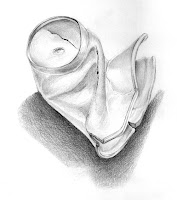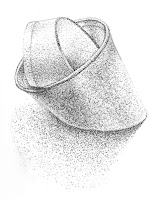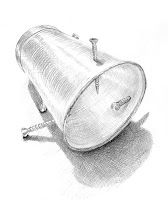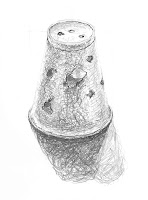Still life Drawing (Value)
October 20, 2015
Today we began our second major project. After studying the effects of light on objects and creating the illusion of form from a two dimensional shape, students are ready to take on the all white still life. Before beginning the final project students have been given numerous formative assessments designed to strengthen their observational skills and to practice tonal and linear rendering.
Here is a quick review of some of the methods used to render objects: How to draw with different rendering techniques
EXPLORE WITH 4 DIFFERENT RENDERING TECHNIQUES
I will discuss four different techniques you can use to make and interesting object or to help you loosen up and think outside of the box.
The first thing you can do is to create a tonal value strip on a separate piece of paper of each of these techniques. This will help you get a hang of using them and to practise going from dark to light on the tonal spectrum.
The four techniques I will be discussing are smooth, scribble, hatching and cross-hatching and pointillism. I hope that after you read this that you will find new inspiration to use these techniques in your drawings.
 |
| Smooth |
Smooth
 |
| Pointillism (stippling) |
Pointillism
 |
| Hatching & Cross-hatching |
Hatching & cross-hatching
 |
| Scribble |
Scribble
Scribble is literally scribbling like you did when you were a child. The best way to go about when scribbling is to keep you wrist relaxed. You can experiment with the angle at which you are holding your pencil to achieve a different mark as you draw. Vary the pressure at which you draw and you can overlap your scribbles to get a nice tonal spectrum in your drawing. Scribble is a great rendering technique for textured objects like the surface or a carpet or tennis ball.
Some of these rendering techniques might sound strange but they work great when you want to apply texture and they are also fun to do. I recommend that you try all these techniques and most of all enjoy while you are doing it.